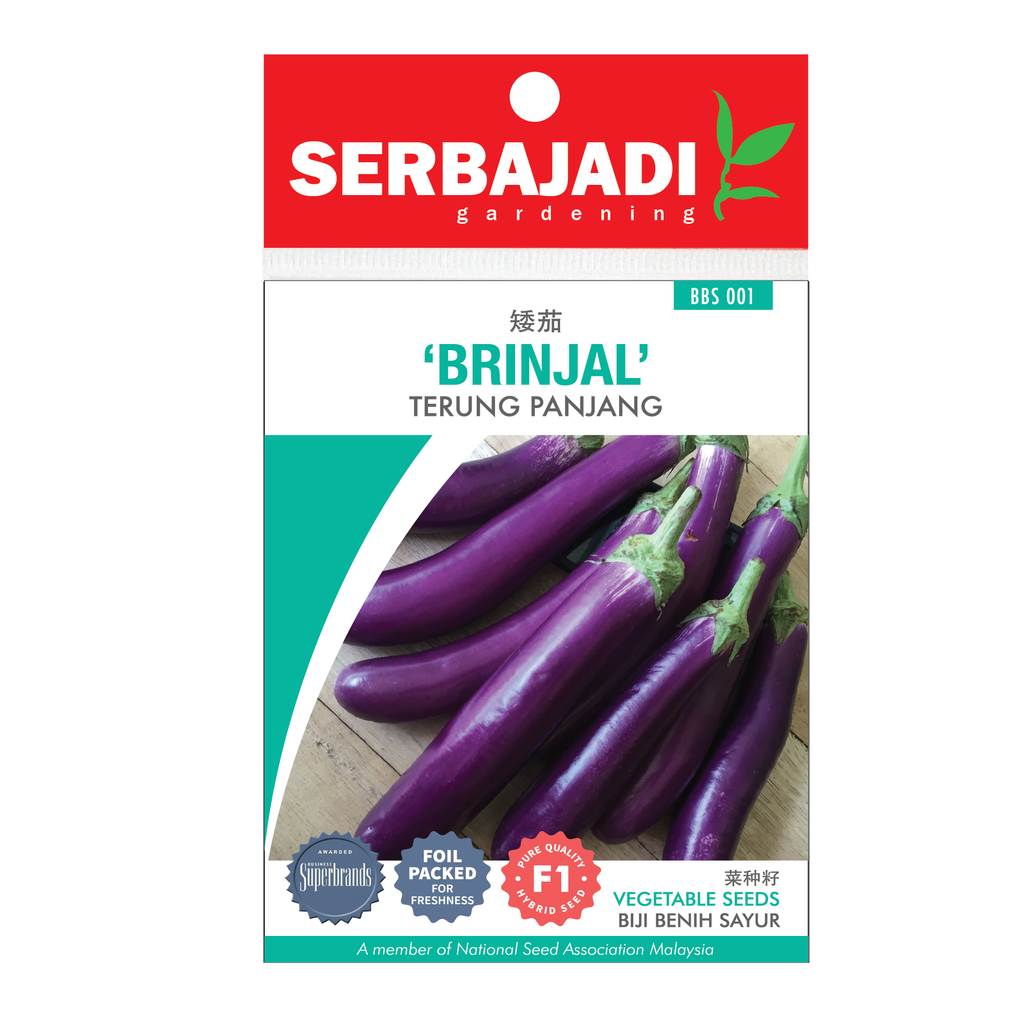Serbajadi Brinjal Seed (Solanaceae)
The brinjal or eggplant is a popular vegetable in local kitchens. This vegetable is easy to grow and thrives best in a hot climate. This popular fruit vegetable belongs to the same family as tomato and hot pepper. Brinjal is one of the more prolific producers of the vegetable world. On top of that, it is great in recipes. The dark purple fruit is slender and straight with spongy flesh that contains numerous small seeds. Brinjal is high in magnesium, fibre, potassium, and vitamins C, K and B6. On top of that, it is great in recipes. Brinjal can be cooked in numerous ways – the fruits, both mature and immature, are sliced and stir-fried, steamed, boiled, stuffed or stewed. However, a technique for preventing oxidation and darkening is to soak the cut fruits in saltwater for a few minutes. In terms of nutrition, the brinjal is rich in Vitamin a and phosphorus. Dieters should love brinjal, being low in calories and fat.
Type of vegetable: Fleshy fruited
Edible part: Fruits
DIRECTION OF USE
Best soil: Before planting, add plenty of compost or manure, as brinjal thrives in rich soil with plenty of humus to encourage good root growth.
How to plant: You can grow the seeds in pots or boxes indoors and they will germinate in about 10-12 days; and the seedlings can be transplanted about 30-40 days after sowing. When transplanting the seedlings, keep them about 10-12 cm apart. Use light, sandy soil with plenty of humus, and manure or compost. For outdoors planting, select a sunny location. Brinjal likes full sun. Sow seeds very shallow, about 1/4 to 1/2 inch and lightly water them in. Space 1 1/2 feet apart. Space rows 2 to 2 1/2 feet apart.
When to harvest: 55 to 70 days. The brinjal can be harvested as soon as the first fruit reaches a desirable size and a lot of gloss appears on the skin. Do not allow it to fully mature before harvesting as young fruits are more tender and have smaller seeds. By continuous harvesting, you will encourage more fruit to set all the way.
How to harvest: The fruits are harvested by hand. Cut fruits with a pair of scissors or sharp knife
Care: Water well during flowering and when fruits are developing. Pinch out the growing tips to encourage compact growth. Stake plants that have a heavy fruit set. Brinjal does not suffer from too many diseases.
STORAGE
Keep away from children and pets.
Store in a cool and dry place away from direct sunlight.

